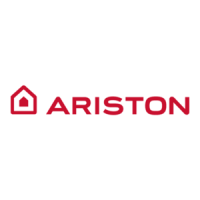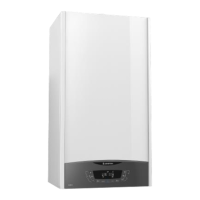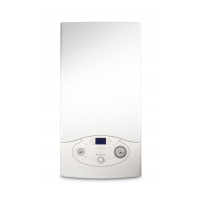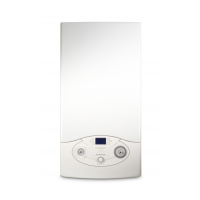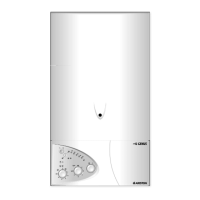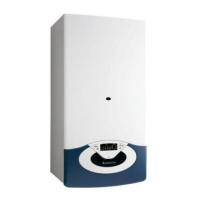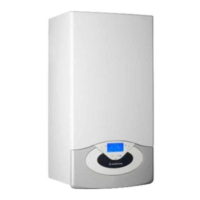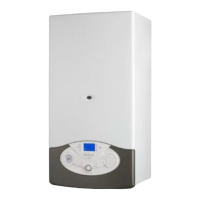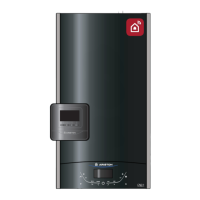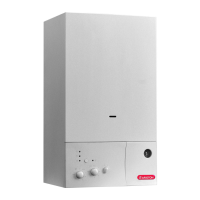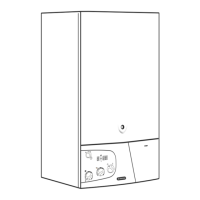10
2.8. WATER CONNECTIONS
Leg
end:
A = Central Heating Flow
B = Domestic Hot Water Outlet
C = Gas Inlet
D = Domestic Cold Water Inlet
E = Central Heating Return
H
= Condensate discharge
I = Safety valve discharge
J
= Drain valve
Central Heating
Detailed recommendations are giv
en in BS 6798:1987 and BS
5449-1:1990, the f
ollowing notes are given for general guidance.
PIPE WORK:
Copper tubing to BS EN 1057:1996 is recommended for
water pipes. Jointing should be either with capillary soldered
or compression fittings.
Where possible pipes should have a gradient to ensure air is
carried naturally to air release points and water flows
naturally to drain taps.
The appliance has a built-in automatic air release valve, however
it should be ensured as far as possible that the appliance heat
exchanger is not a natural collecting point for air.
Except where providing useful heat, pipes should be
insulated to prevent heat loss and avoid freezing.
Particular attention should be paid to pipes passing through
ventilated spaces in roofs and under floors.
BY-PASS:
The appliance includes an automatic by-pass valve, which
protects the main heat exchanger in case of reduced or
interrupted water circulation through the heating system, due
to the closing of thermostatic valves or cock-type valves
within the system.
SYSTEM DESIGN:
This boiler is suitable only for sealed systems.
DRAIN COCKS:
These must be located in accessible positions to permit the
dr
aining of the whole system. The taps must be at least
15mm nominal siz
e and man
uf
actured in accordance with BS
2870:1980.
SAFETY VAL
VE
DISCHARGE:
The discharge should terminate facing downwards on the
e
xter
ior of the b
uilding in a position where discharging
(possib
ly boiling w
ater & steam) will not create danger or
n
uisance
, but in an easily visible position, and not cause
damage to electrical components and wiring.
The discharge must not be over an entrance or a window or
an
y other type of pub
lic access
.
CONDENSA
TE
DISCHARGE:
The condensate discharge hose from the boiler must have a
continuous fall of 2.5° and must be inserted by at least 50 mm
into a suitab
le acid resistant pipe - e
.g.
plastic w
aste or
overflow pipe. The condensate discharge pipe must have a
continuous fall and preferably be installed and terminated
within the building to prevent freezing.
The discharge pipe must be terminated in a suitable position:
i)
Connecting in to an internal soil stack (at least 450 mm
above the invert of the stack). A trap giving a water seal of
at least 75 mm must be incorporated into the pipe run,
there also must be an air break upstream of the trap.
VIEW
OF THE
BOILER CONNECTIONS
A
CB
D
E
H
I
J
A
C E
H
I
J
FIG. 2.4
27/32 MFFI
27/32 RFFI SYSTEM
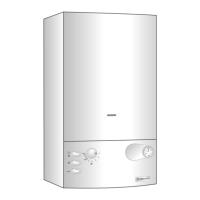
